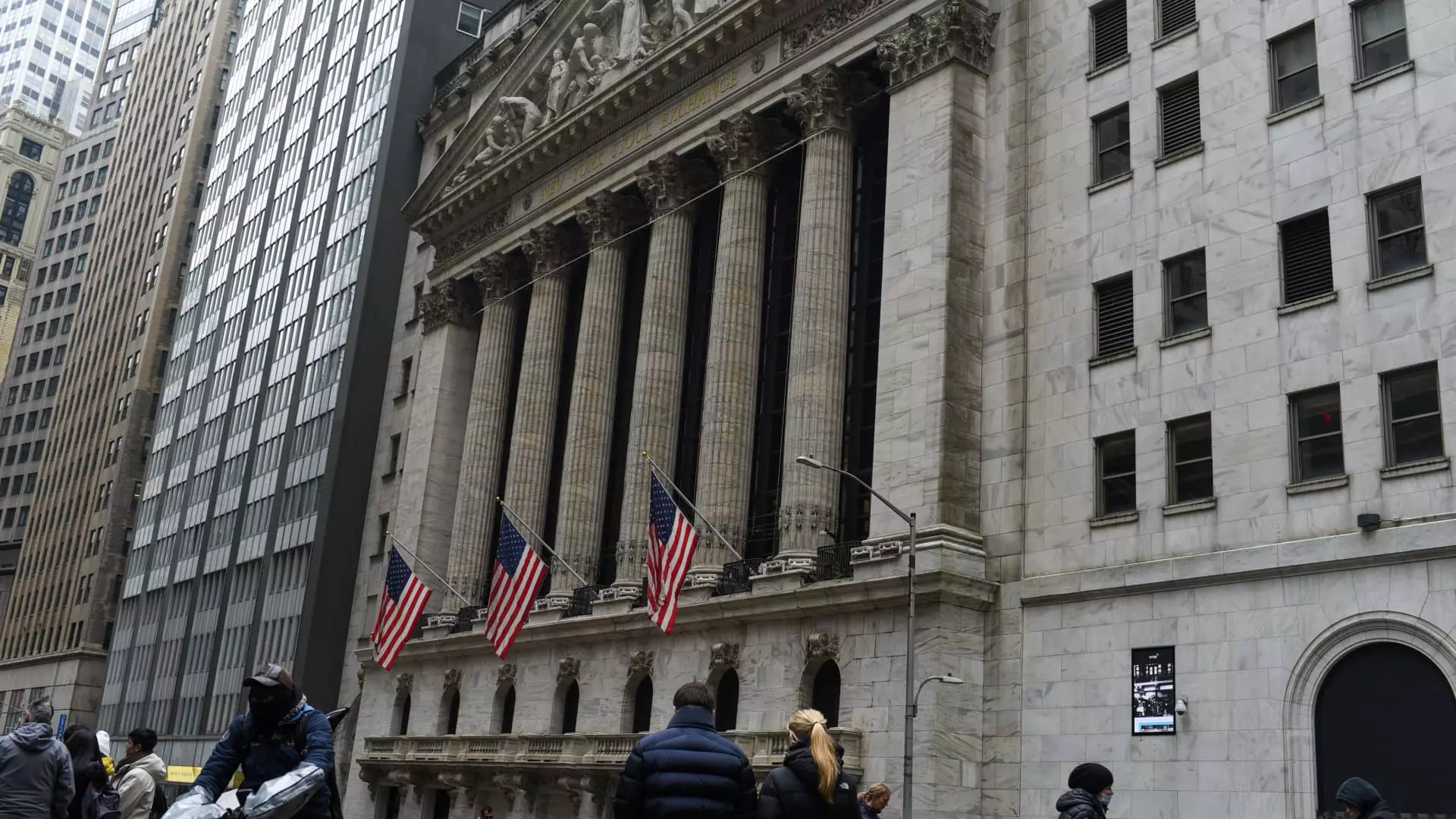In the midst of a tumultuous financial landscape, characterized by soaring inflation and fluctuating economic policies, it becomes crucial to take a closer look at the trends manifesting within the stock market. Recent sell-offs highlight deep-seated concerns among analysts and investors alike, underscoring that fear can often cloud rational judgment. The weekend’s trading activities revealed a unique tactical opportunity, prompting some savvy investors to capitalize on lower share prices. Notably, the $25 drop in stock prices presents both a danger and a distinct competitive edge for those willing to navigate these murky waters.
On one hand, the market’s swift descent showcases the fragility of consumer confidence and corporate earnings expectations. On the other hand, this volatility creates a ripe environment for shrewd investors who can discern value amid chaos. Investing at a time when fear reflects low prices allows for potentially lucrative gains when the market inevitably corrects itself. The emphasis now falls on identifying firms that, despite external pressures, demonstrate robust fundamentals and initiatives to improve margins.
Bulwarks of Stability: Investing in Danaher and Home Depot
Recent moves made by the Charitable Trust, which include the acquisition of 25 shares of Danaher and 10 shares of Home Depot, exemplify a strategic approach grounded in patience and measured risk. While many investors may shy away from such uncertain conditions, the reality is that certain stocks still hold exceptional promise. Danaher, which has faced its fair share of challenges, demonstrates diligent proactive measures to regain its footing. The firm is now seen as attractively de-risked at present price levels, empowered by its conservative guidance on revenue and earnings for 2025.
Analysts from powerhouse organizations like Stifel and Goldman Sachs have recently upgraded Danaher, reflecting a renewed confidence that could usher in a phase of recovery and competitive advantage within the bioprocessing sector. With expected cost-saving measures of at least $150 million, the company’s leadership seems to acknowledge the need for introspection and innovation amid market pressures. Watching a company transform adversity into a catalyst for refocused performance is not only inspiring but simultaneously illustrates the tangible benefits of strategic investing during downturns.
Home Depot: Weathering the Storm With Resilience
Simultaneously, investing in Home Depot underscores the sentiment that patience amidst housing market softness can bear fruit. The concern that a slump would undermine consumer spending poses a legitimate threat; however, this paradigm may also stimulate a rebound for companies known for their versatile market strategies. The ongoing transformations within the home improvement realm suggest that the need for robust fiscal management will drive an appreciation for companies adept in facing adversities. Home Depot’s returns have made it a darling of steadfast investors willing to endure short-term pain for long-term gains.
Discerning investors will appreciate not just share prices, but a deeper understanding of the fundamentals driving these businesses. Home Depot’s resilience is tied not solely to its share price but a culture of customer-oriented service and innovation that resonates deeply in uncertain times. In hindsight, it isn’t merely about seizing deals but strategically positioning oneself in companies that embody potential amidst challenges.
Navigating Through Economic Headwinds
The overarching narrative is one of cautious optimism and determined preparation for potential shifts in economic conditions. Investors must adopt a nuanced perspective, understanding that not all stocks are created equal. Companies like Danaher and Home Depot highlight that amidst uncertainty, there exist resilient enterprises capable of weathering and overcoming fluctuations inherent in the marketplace.
As the market grapples with seemingly insurmountable challenges, the clarity rests with those investor-minded individuals who refuse to surrender to fear or complacency. It becomes imperative to maintain a radar for quality over short-term fluctuations. Indeed, investors must persistently reevaluate their strategies, research, and risk appetites to ensure they are not merely reacting to market sentiments but instead actively participating in the economic narrative shaping the future. This is the essence of successful investing amidst chaos, asserting control rather than being swept away by external tides.
Navigating these treacherous waters requires a roadmap built on experience, diligence, and an unwavering commitment to seek value where it is often overlooked. Embracing calculated opportunities when the market seems bleak is not just smart; it is vital for those who aim to emerge stronger and financially rewarded when the storm eventually recedes.

